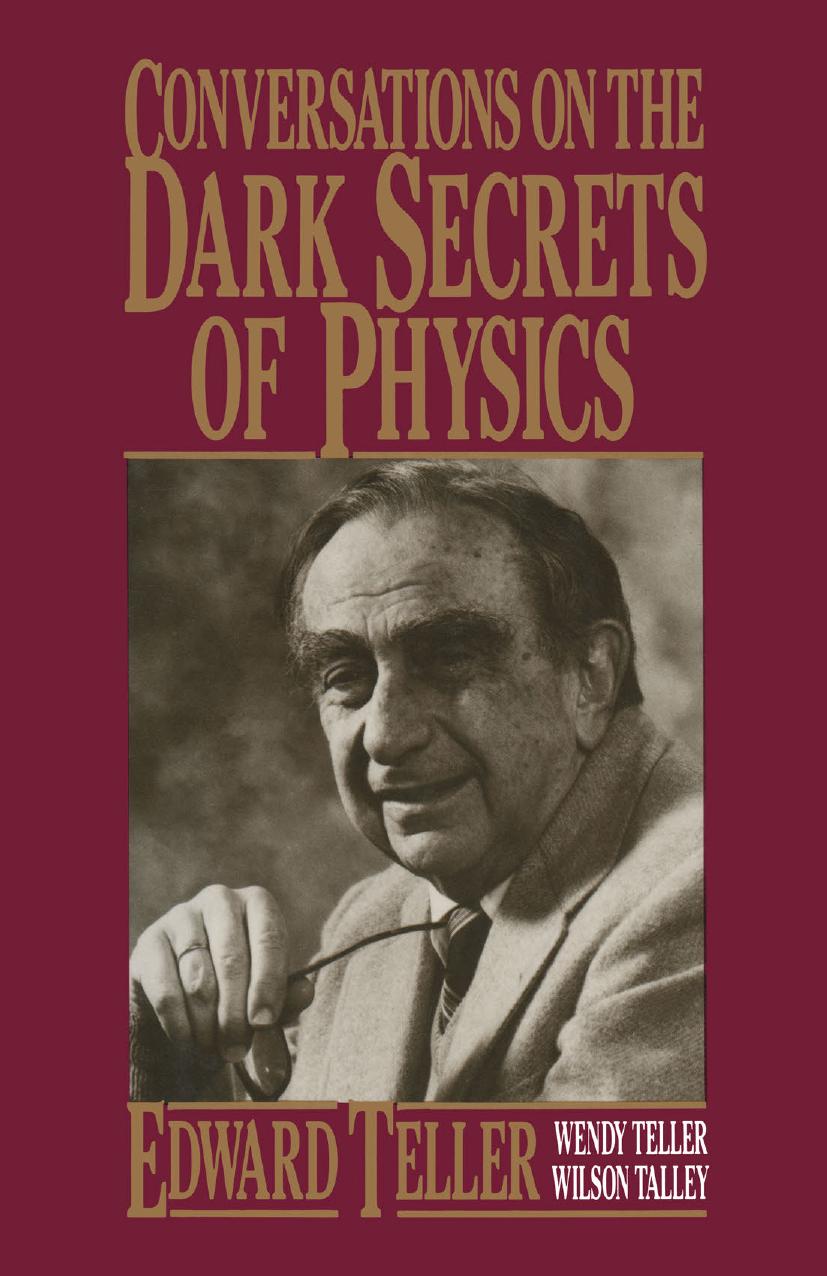Conversations on the Dark Secrets of Physics by Edward Teller

Author:Edward Teller
Language: eng
Format: epub, pdf
Publisher: Basic Books
Published: 2011-05-04T00:00:00+00:00
Figure 1. This sketch of the energy levels for the hydrogen atom illustrates how Ï1 + Ï2 = Ï3 + Ï4. At the top, the energy is 0; the electron escapesâthe atom is ionized.
I mentioned that Galileo became interested in physics when he saw a chandelier swing in church and he noticed that it swung with the same frequency no matter what the amplitude. In fact, it is one of the elementary laws of classical mechanics: if the restoring force is proportional to the displacement, then the frequency is independent of the amplitude.
In a hydrogen atom, the electron moves around the nucleus so the force should depend on the distance r as 1/r2. The motion is quite different from a harmonic oscillation. But, consider the di-atomic molecule (diatomic meaning two atoms in each molecule) of nitrogen, N2. The two nitrogen atoms want to be at a certain distance from each other. If I push them together, they will try to get back to their original position and the more they are compressed, the harder they will push back. Here we do have a force which is (in first approximation) proportional to the displacement. So, we have a harmonic oscillator. The frequency of a harmonic oscillator should be independent of the energy, so the levels should be equidistant and should look like the levels shown in Figure 2. The energy difference is the same for each pair of neighboring levels because the frequency of the light which is absorbed or emitted will remain the same in the higher states of energy.83
Download
Conversations on the Dark Secrets of Physics by Edward Teller.pdf
This site does not store any files on its server. We only index and link to content provided by other sites. Please contact the content providers to delete copyright contents if any and email us, we'll remove relevant links or contents immediately.
The Complete Stick Figure Physics Tutorials by Allen Sarah(7310)
Secrets of Antigravity Propulsion: Tesla, UFOs, and Classified Aerospace Technology by Ph.D. Paul A. Laviolette(5311)
Thing Explainer by Randall Munroe(3877)
The River of Consciousness by Oliver Sacks(3543)
The Order of Time by Carlo Rovelli(3145)
How To by Randall Munroe(3039)
A Brief History of Time by Stephen Hawking(2962)
I Live in the Future & Here's How It Works by Nick Bilton(2938)
The Great Unknown by Marcus du Sautoy(2649)
What If?: Serious Scientific Answers to Absurd Hypothetical Questions by Randall Munroe(2637)
Midnight in Chernobyl by Adam Higginbotham(2485)
Blockchain: Ultimate Step By Step Guide To Understanding Blockchain Technology, Bitcoin Creation, and the future of Money (Novice to Expert) by Keizer Söze(2450)
Networks: An Introduction by Newman Mark(2360)
The Meaning of it All by Richard Feynman(2300)
Easy Electronics by Charles Platt(2282)
The Tao of Physics by Fritjof Capra(2231)
Midnight in Chernobyl: The Untold Story of the World's Greatest Nuclear Disaster by Adam Higginbotham(2179)
When by Daniel H Pink(2084)
Introducing Relativity by Bruce Bassett(2080)
